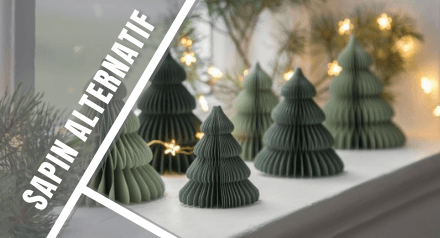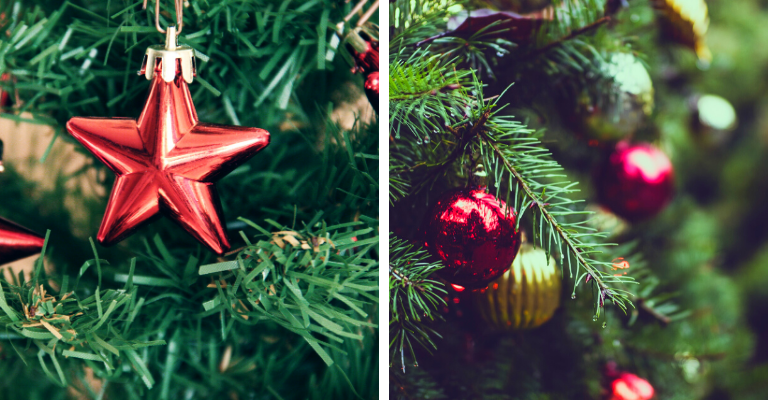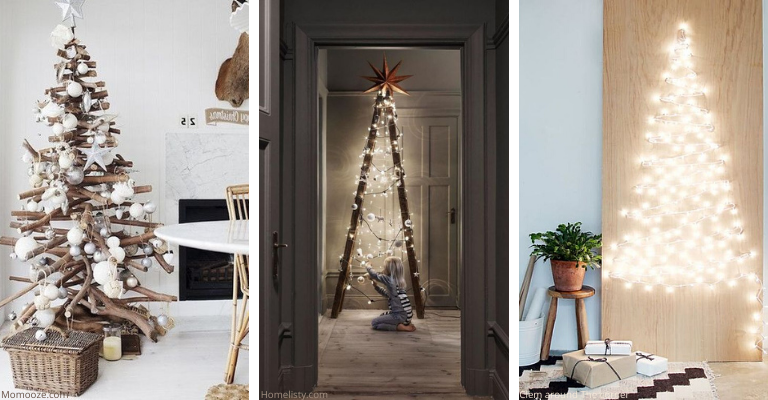Ecological alternatives to the traditional Christmas tree
6.9 million ... Do you know what this number corresponds to?
It is the number of trees (natural and artificial) sold in France for last year's Christmas celebrations (according to the Kantar study).
The presence of the Christmas tree is essential as the festive season approaches. When choosing a Christmas tree, you have probably already wondered where it comes from, its impact on the environment and possible eco-responsible alternatives?
Here are our tips for choosing a "green" tree.
Traditional or artificial fir trees?
Synthetic Christmas trees may seem like a good option: you can keep them for many years, and no trees are cut down. Even if the idea is charming, buying an artificial Christmas tree, i.e. made of plastic, is not an ecological alternative at all! Between the polluting materials (plastic, aluminium, PVC) used for its manufacture, its transport from Asian countries, and the polluting elements emanating from the product throughout its use ... we are far from the desired objective.
"A plastic tree should be kept for between 10 and 20 years so that its impact on the environment is the same as if you had chosen a natural tree every year. »
Not all natural Christmas trees should be put in the same basket. Almost 5.8 million of them were sold last year: both Made in France and from the other side of the globe.
As with wooden furniture, it is important to know where the wood comes from before buying. As a furniture manufacturer, we favour local wood from French forests and especially from controlled management. Many fir producers share our values. To reduce its impact on the environment, it is therefore ideal to buy local.
If you want to respect the tradition of the “real” Christmas tree, here are some recommendations:
- Give preference to fir trees grown in France: You first limit pollution linked to transport. In addition, you should know that these trees are grown exclusively for the end of the year celebrations ... After cutting, other inches are planted: in no case is there a question of deforestation.
- Choose fir trees certified as "Plante Bleue" (eco-responsible production in France), "Fleurs de France" (quality plants produced in France), or "Label Rouge" (high quality plants, with strict aesthetic criteria).
- You will also find “organic” labeled trees. The latter are specially grown for the holiday season, without pesticides.
Ecological alternatives: the creative DIY Christmas tree.
The greenest and most eco-responsible alternative is to create your own Christmas tree! This DIY trend is becoming more and more successful every year. With simple, recycled materials and a little creativity, you can achieve a stunning and original result.
Here are a few ideas that may inspire you:
- A Christmas tree made of branches or driftwood: It is one of the most popular DIYs, firstly for its originality and also for its very aesthetic and warm side! Whether it is stacked on top of each other or simply connected with a rope, all you need is branches of different sizes and widths.
- The "ladder" Christmas tree: The imagination has no limits, you can transform your everyday objects into decoration for the holidays. A double scale will do the trick, for example. To successfully decorate, nothing could be simpler, cover your tree as much as possible with garlands and Christmas balls.
- The wall Christmas tree: This is one of the easiest to make. Whether on a wall, in a corner or even on a board (so as not to damage your wall), all you need to do is hang light or colored garlands giving the appearance of a Christmas tree.












.jpg)
.jpg)
.jpg)
.jpg)